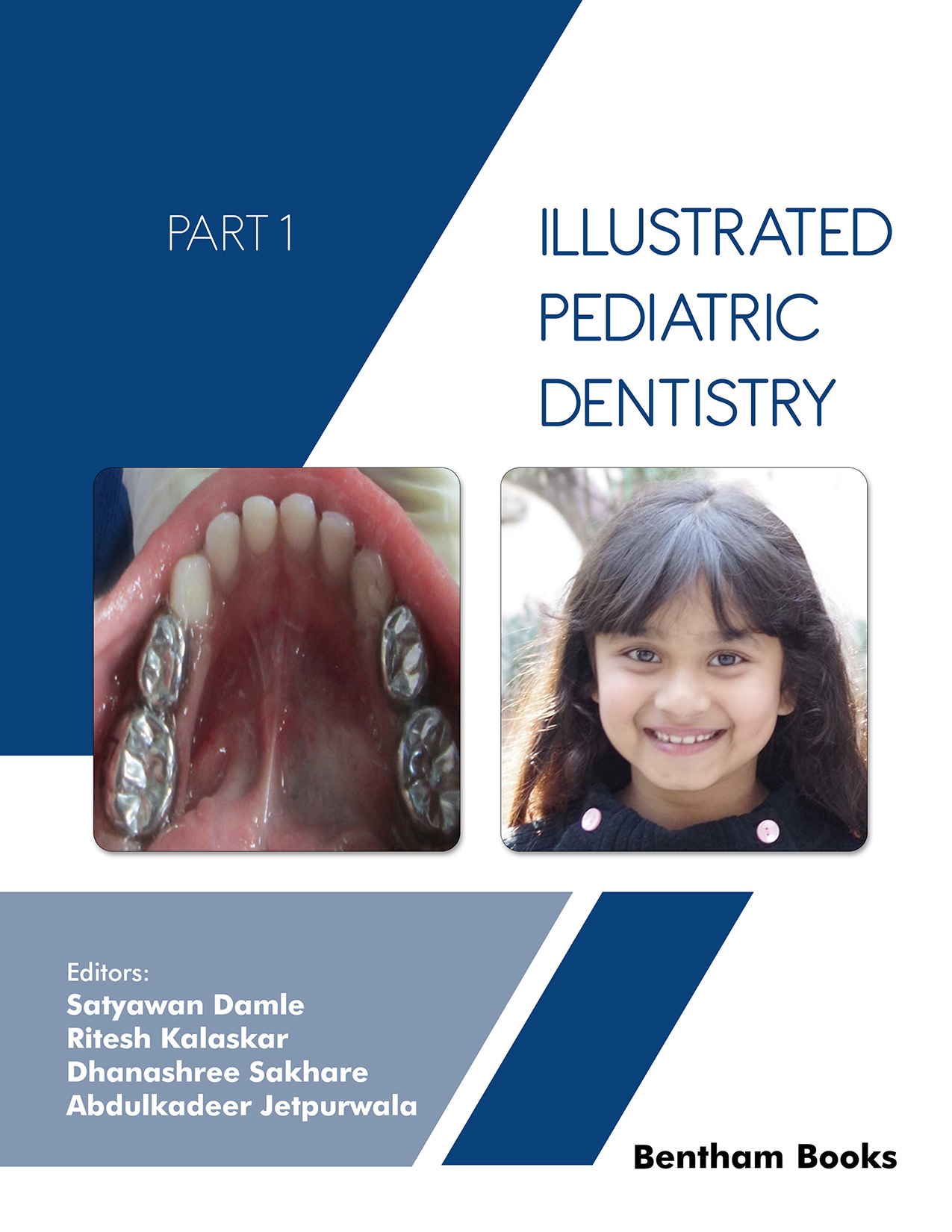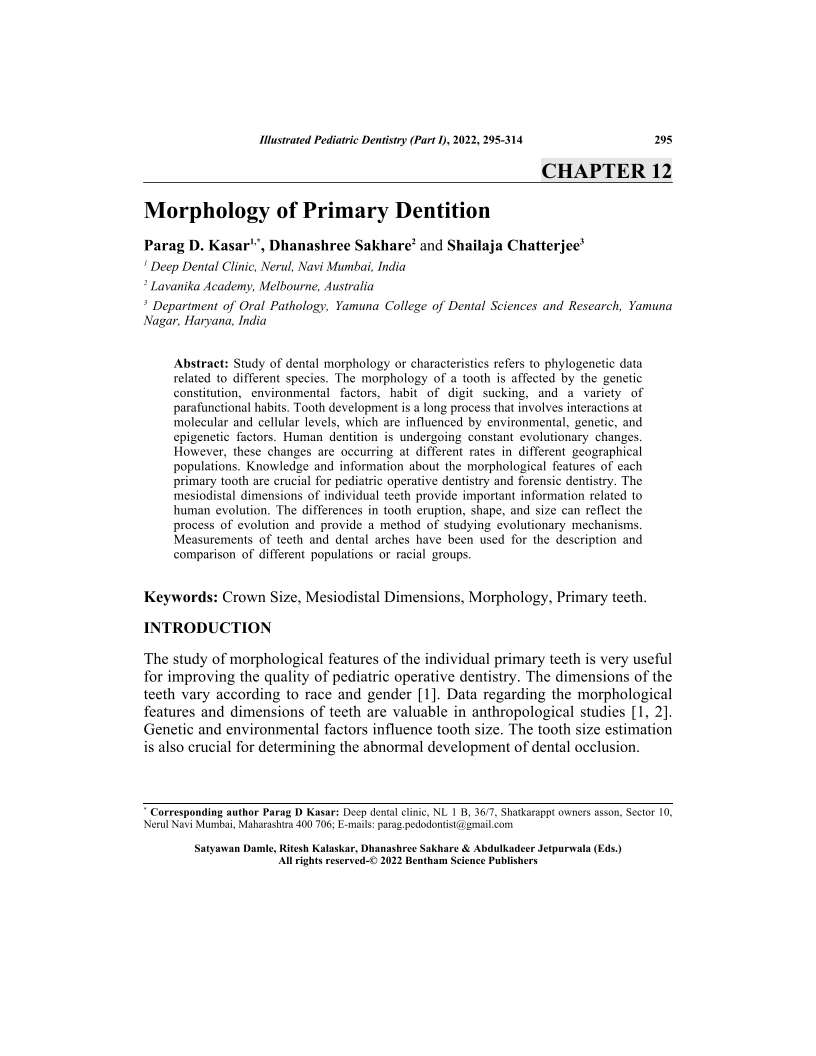Morphology of Primary Dentition

- Authors: Parag D. Kasar1, Dhanashree Sakhare2, Shailaja Chatterjee3
-
View Affiliations Hide Affiliations1 Deep Dental Clinic, Nerul, Navi Mumbai, India 2 Lavanika Academy, Melbourne, Australia 3 Department of Oral Pathology, Yamuna College of Dental Sciences and Research, Yamuna Nagar, Haryana, India
- Source: Illustrated Pediatric Dentistry - Part 1 , pp 295-314
- Publication Date: October 2022
- Language: English
Morphology of Primary Dentition, Page 1 of 1
< Previous page | Next page > /docserver/preview/fulltext/9789815051483/chap12-1.gif
Study of dental morphology or characteristics refers to phylogenetic data related to different species. The morphology of a tooth is affected by the genetic constitution, environmental factors, habit of digit sucking, and a variety of parafunctional habits. Tooth development is a long process that involves interactions at molecular and cellular levels, which are influenced by environmental, genetic, and epigenetic factors. Human dentition is undergoing constant evolutionary changes. However, these changes are occurring at different rates in different geographical populations. Knowledge and information about the morphological features of each primary tooth are crucial for pediatric operative dentistry and forensic dentistry. The mesiodistal dimensions of individual teeth provide important information related to human evolution. The differences in tooth eruption, shape, and size can reflect the process of evolution and provide a method of studying evolutionary mechanisms. Measurements of teeth and dental arches have been used for the description and comparison of different populations or racial groups.
-
From This Site
/content/books/9789815051483.chap12dcterms_subject,pub_keyword-contentType:Journal -contentType:Figure -contentType:Table -contentType:SupplementaryData105

